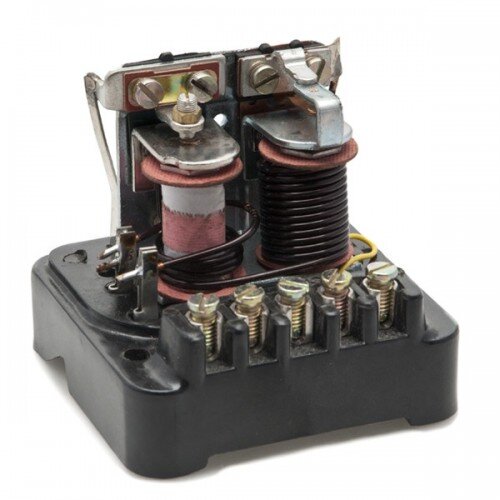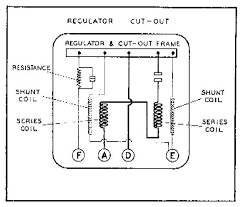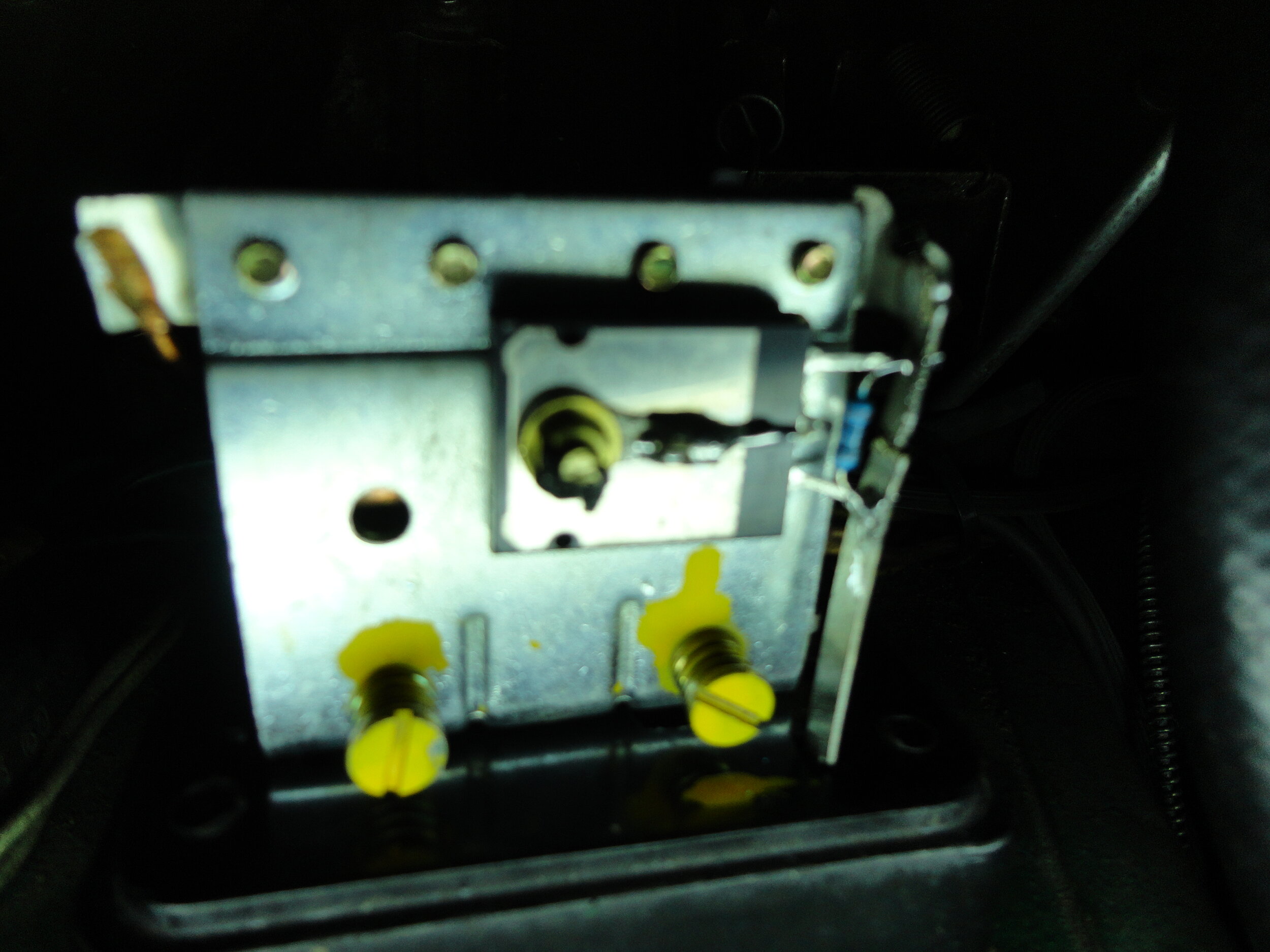Are your headlights "dim"?

I had trouble with "dim" headlights and as much as I fiddled with the "charging" could not get the voltage up above 13 volts and with the lights on the voltmeter showed +/- 11.9 volts.
The generator charge indicator worked fine. It turned out to be "welded" voltage regulator contacts. The 60 ohm resistor in parallel with the welded contacts gave a constant 25 ohms, thus always reducing the generator charging. Below is what you can do to keep the charging circuit at it's best.
Lucas RB106 Voltage Regulator
The following describes briefly how the regulator controls the battery charge and two situations to be checked if you have one of these fitted. Watch out for the "immitation" Lucas regulators that are now the only "new" available. Very poor manufacture and "soft" relay contacts.
The Lucas regulator regulates the charge voltage for the battery by the regulator relay which has a contact that connects the generator output to it's field coils. As the generator voltage increases so does the voltage to it's field coils and this continues until the voltage output from the generator reaches +/- 16 volts. The relay will operate and open the contact thus disconnecting the generator field coils and the generator output voltage will decrease and the voltage control relay will release and the contact will close again, conetcting the generator output to it's field coils again. This continues constantly at +/- 60 times a second thus giving a regulated average voltage level. When the contact opens and the field coil is disconnected the voltage in the coils collapses and this induces a "large voltage" of opposite polarity (back EMF) across the contact resulting in a spark. This spark burns the contacts and over time they will become less conductive or even "weld" together and reduce the required charging of the battery. The trouble is there is no indication that this is happening, as the generator charge indicator lamp works fine. There is a 60 ohm resistor across the contact to help reduce the spark burning the contacts. These contacts need "cleaning" periodically and a diode (1N5404) connected across the contact via terminals "F" and "E" to short circuit the back EMF and increase the time before the contact needs cleaning. The diode leads terminal connection will depend on +ve or -ve earthed vehicle.
The Lucas advised regulated voltage setting is +/- 16 volts (dependant on temperature) and this is inpart to cater for lights. When not using lights this voltage is not good for the battery. It will cause excessive "gassing" (boil off electrolyte) and damage the lead plates. The ideal voltage to charge a battery is 14.2 - 14.5 volts. The voltage regulator relay has an "adjustment screw" that can be screwed outward to re-set this with the aid of a volt meter across terminals "A" and "E".
The two above paragraphs help with the battery charging but the contacts still "spark". There is a simple solution to this. Replace the contacts in the generator field circuit with a "solid state" switch. A power transistor is used. The connection to "F" from the regulator relay contacts needs to be "cut" to seperate it into two "sections". The section from the relay contacts is connected to the transistor "base" to switch the transistor. Contacts "closed" transistor "on" contacts "open" transistor "off". The other section from the "F" terminal is connected to transistor "emitter". The frame of the regulator is connected to the transistor "collector". A 100 ohm resistor is connected between the transistor "base" and "emitter" to aid the transistor switching "off". The regulator thus opperates as normal but the regulator relay contacts are isolated from the generator field coils. No "sparking" on the contacts and therefore no damage to them. Negative earthed car use transistor Toshiba NPN 2SC5200 and positive earthed car use Toshiba PNP TTA1943(Q). Refer to photo.








